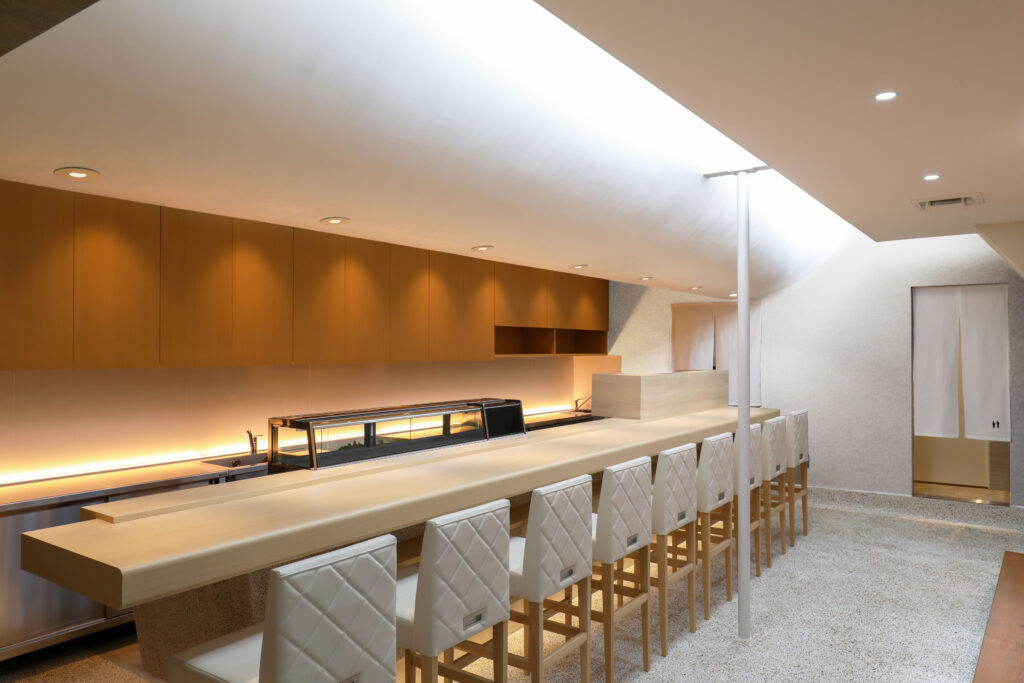
Photo by Jutaro Takami
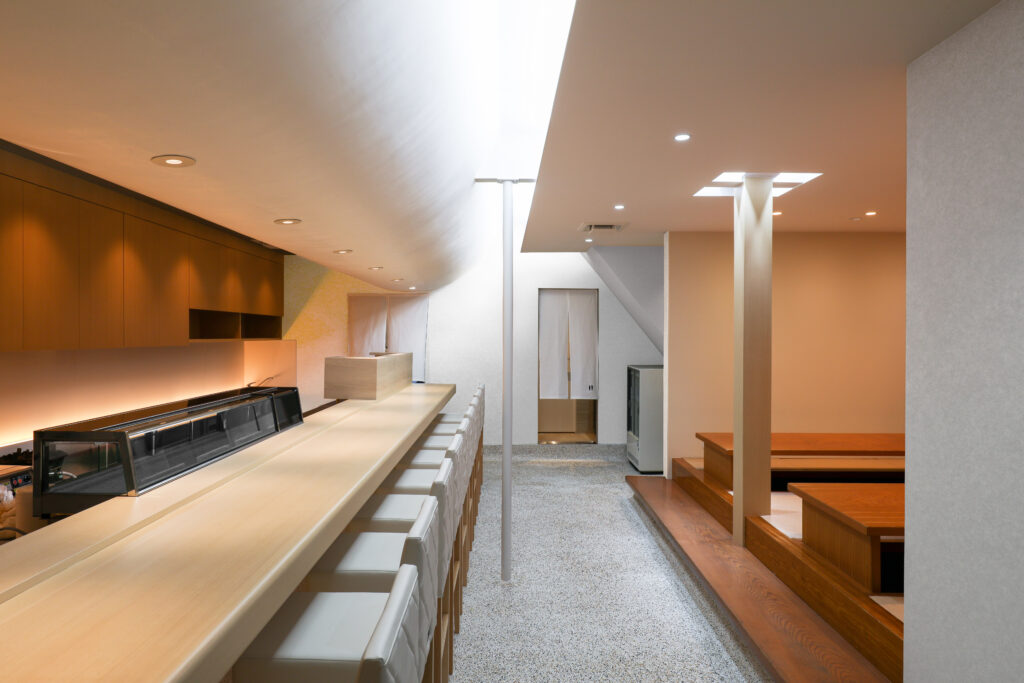
Photo by Jutaro Takami
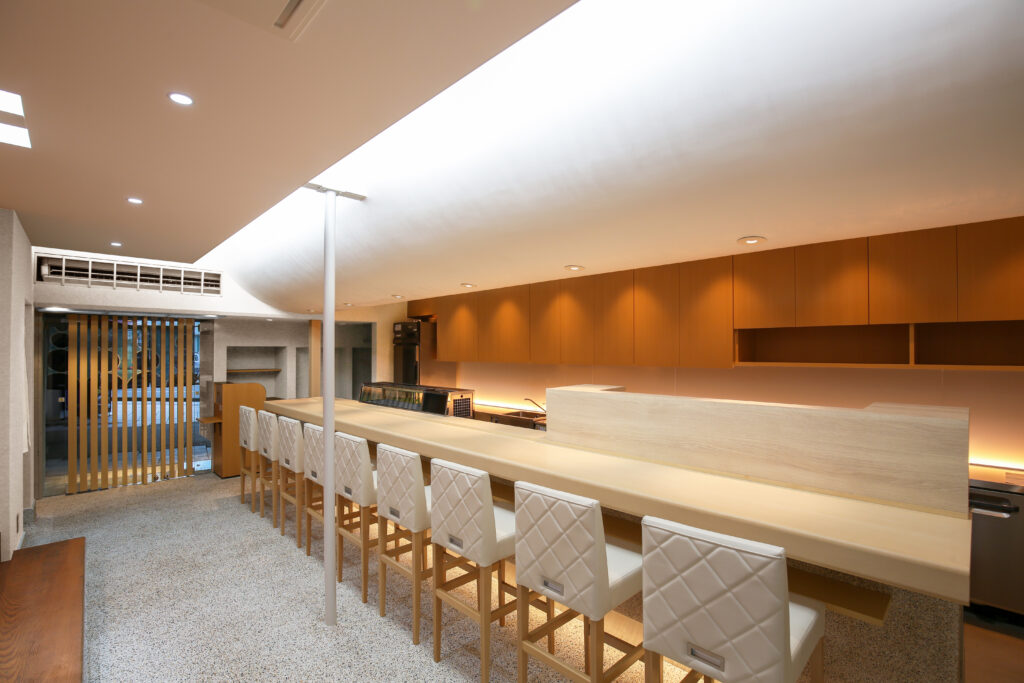
Photo by Jutaro Takami
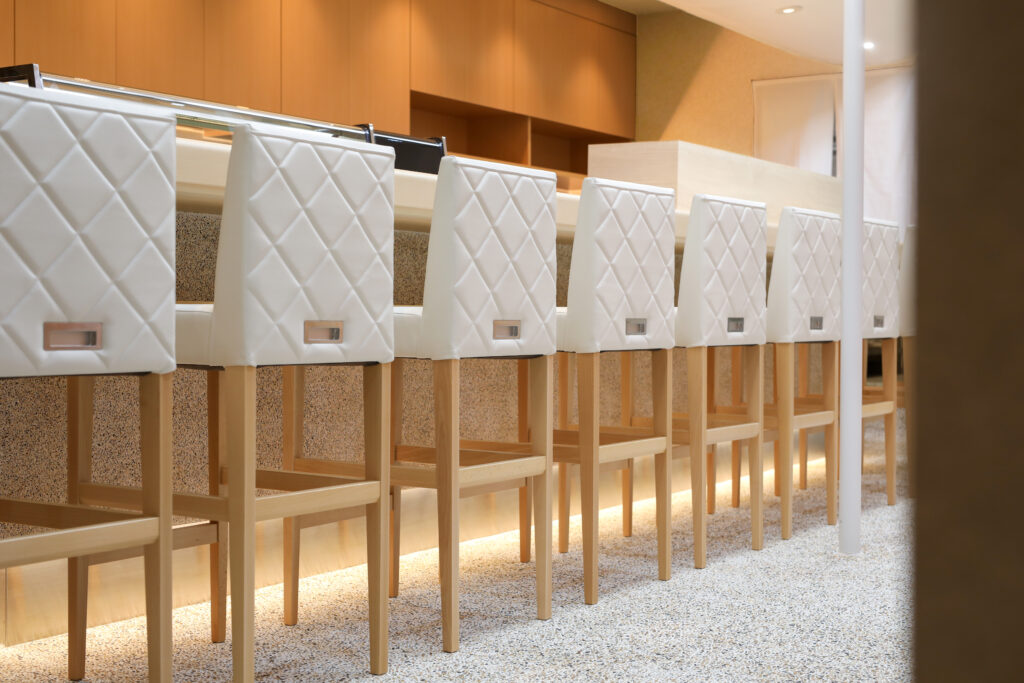
Photo by Jutaro Takami
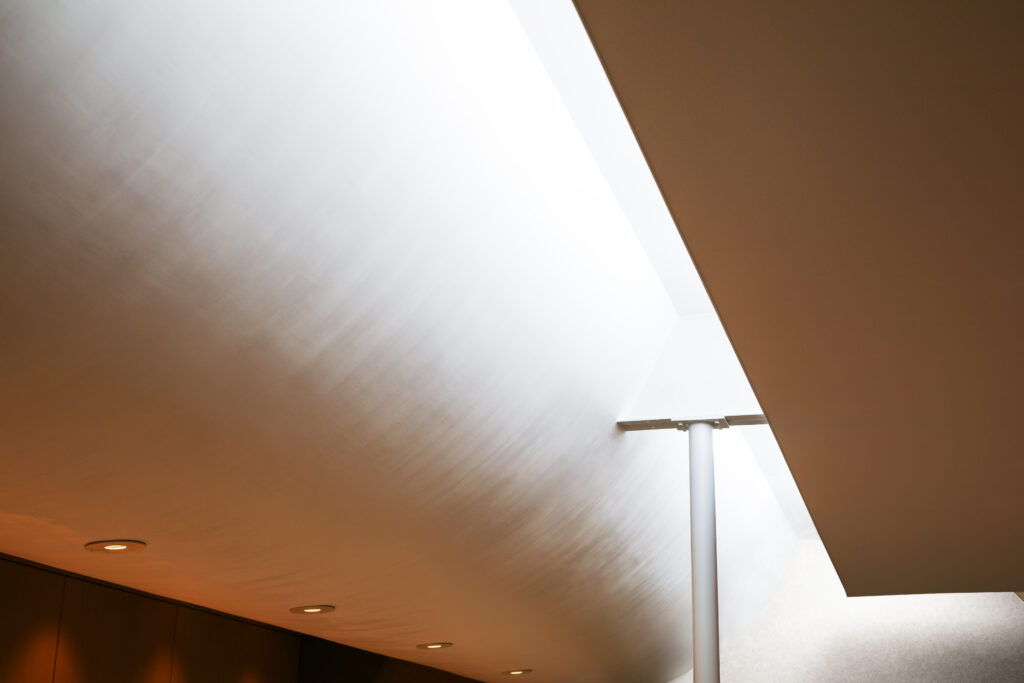
Photo by Jutaro Takami
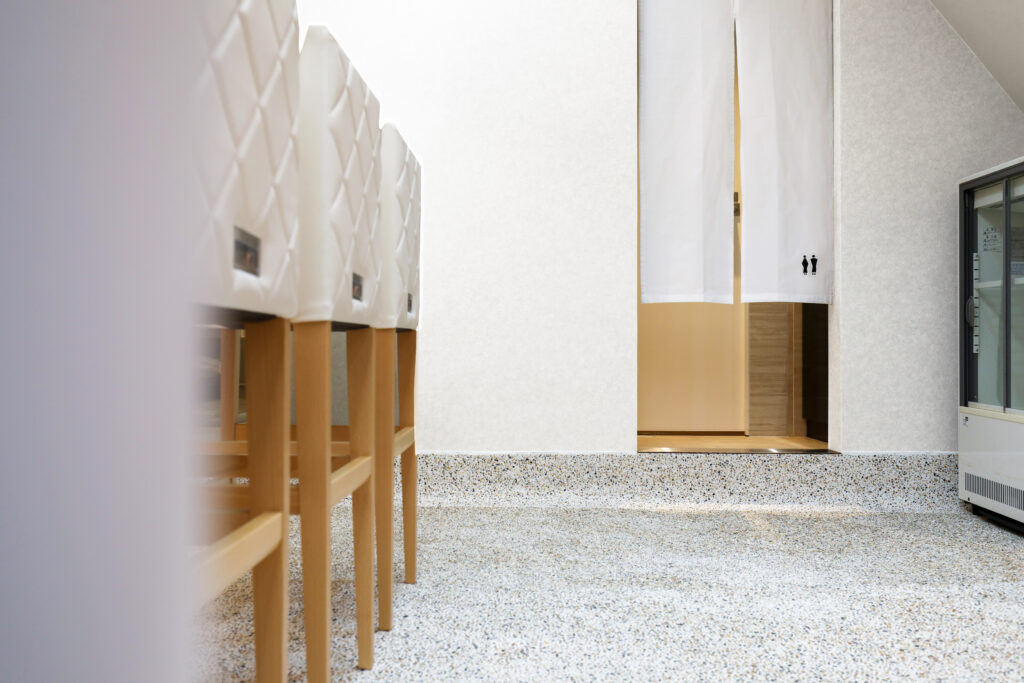
Photo by Jutaro Takami
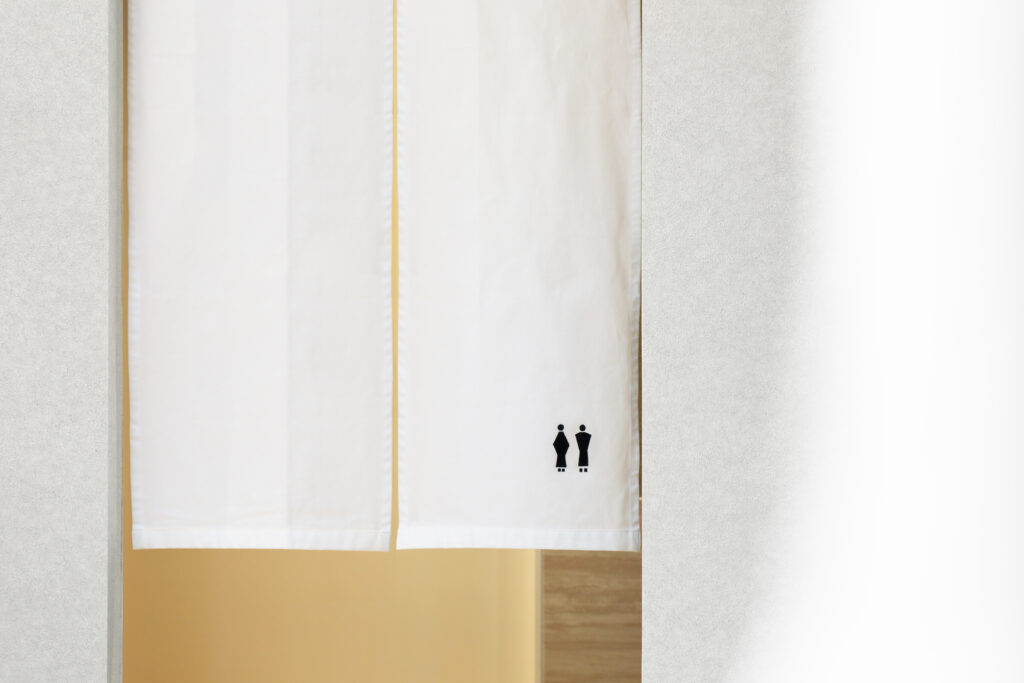
Photo by Jutaro Takami
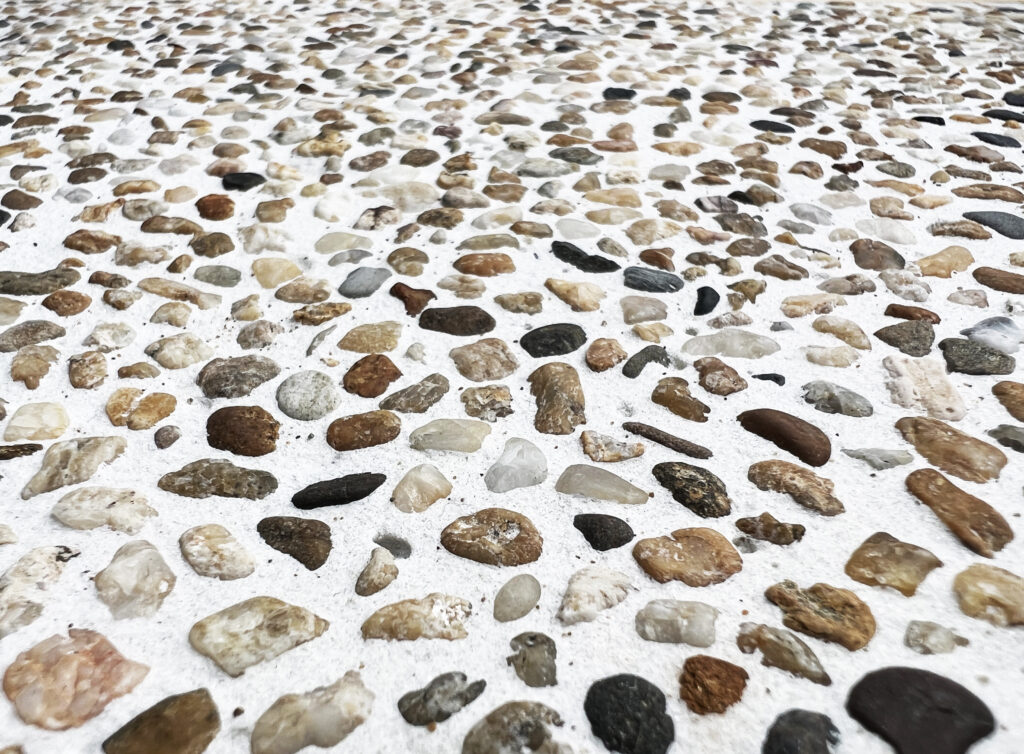
Photo by Jutaro Takami
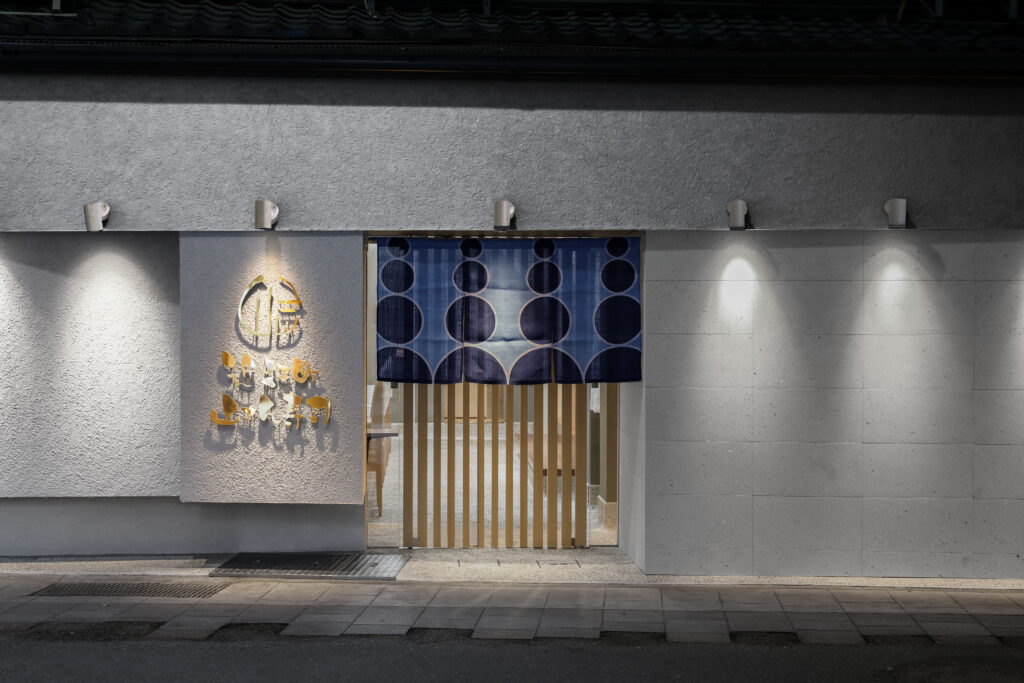
Photo by Jutaro Takami

Photo by Jutaro Takami
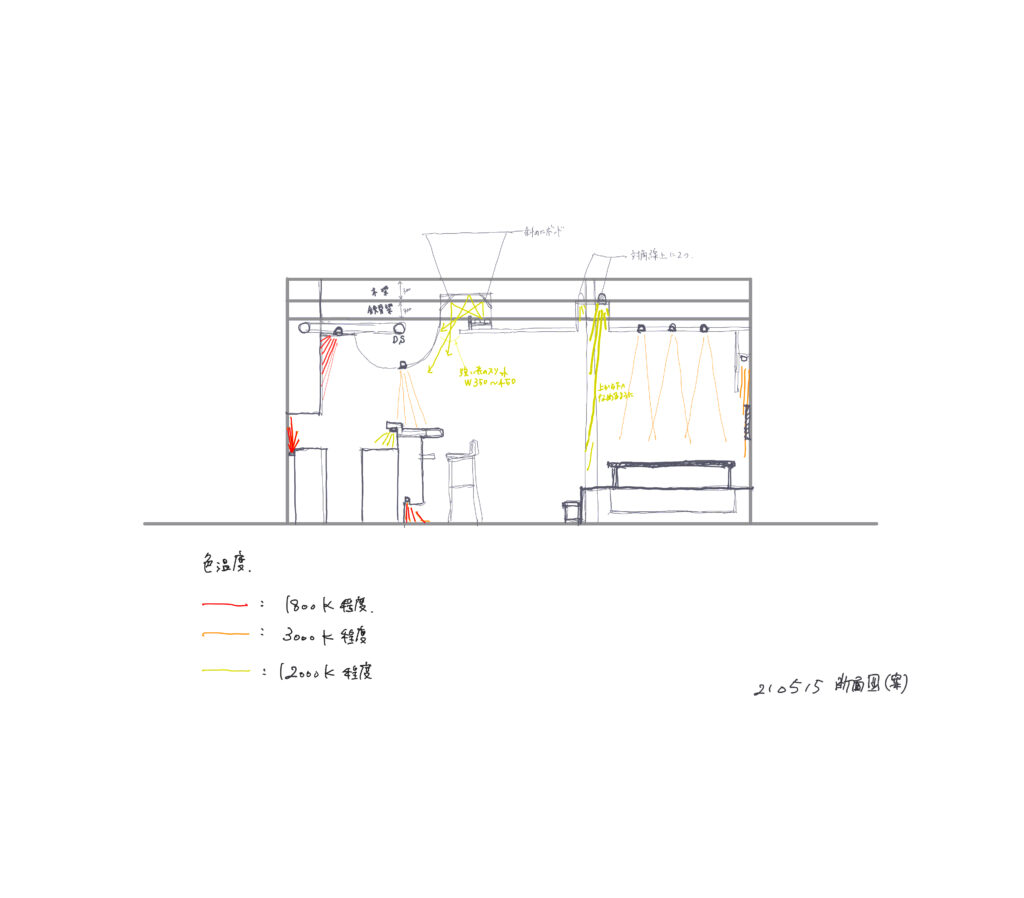
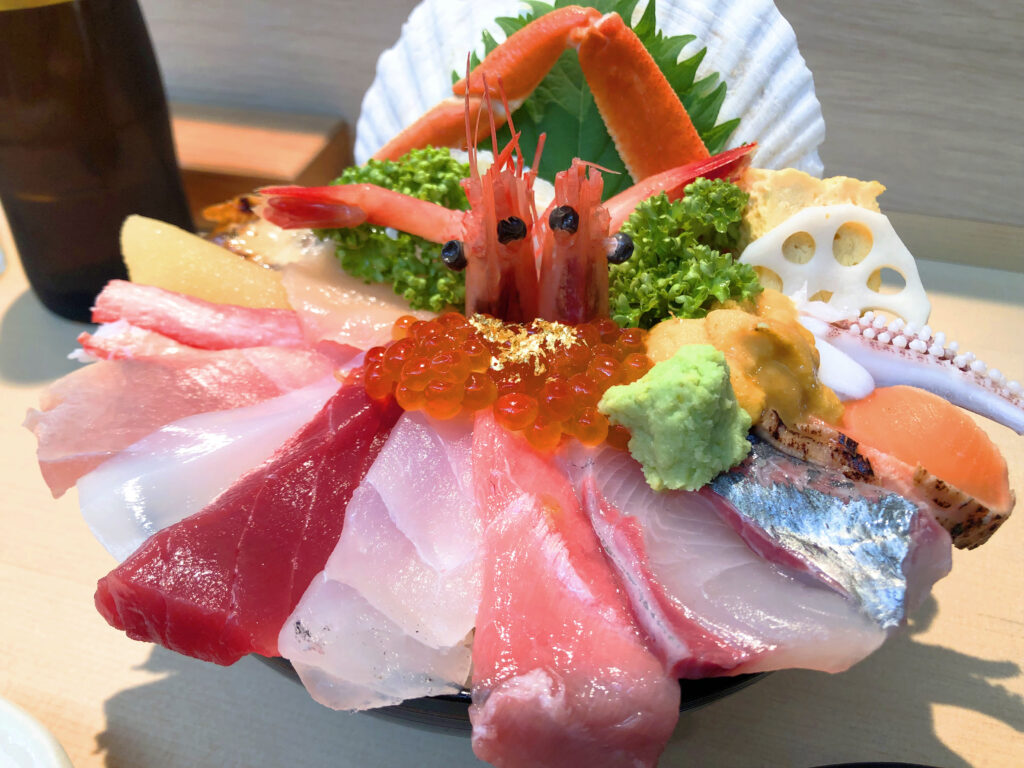
疑似的な自然空間
(English Below)
石川県金沢市の中心部にある近江町市場は、江戸時代から300年以上ものあいだ金沢の食文化を支えている伝統ある市場であり、若者やインバウンドにも人気の観光スポットだ。この計画は、近江町市場で60年つづく、海鮮丼で有名な寿司レストランの店舗改修計画である。
コロナ禍で生まれた「不安感」を払拭し、ゲストに安心して飲食を楽しんでもらうための心身を癒す要素を取り入れることを念頭に、「自然空間」がもたらす清潔感と開放感を演出する建築的操作によって、寿司レストランの新しい在り方を提案することを目指した。
この計画を進めるにあたって、市場空間と店舗空間の連続性と対比性に焦点をあてた。
近江町市場の魅力は、新鮮な食材だけでなく活気ある市場空間の雰囲気を味わえるところにある。市場の臨場感を店内に取り込むために、市場空間と店舗空間に連続性を持たせることにした。市場特有の生き生きとした感覚を味わえるように、店内に活魚をさばく作業場と同じようなコンクリートの砂利洗い出し床を採用した。また、カウンターボリュームを独立型とし、客席とホストの作業場側の床に連続性を持たせた。魚を加工する空間と味わう空間との一体感を出すとともに、寿司レストランの伝統建築様式にみられるゲストとホストの劇場型の関係を崩すことで、店内の臨場感を高めた。
市場の雰囲気を店内に取り込む一方で、飲食店として確保したい清潔感や明るさ、華やかさを演出するため、市場空間との間に対比性を与えた。面分割のファサードデザインにより市場のスケールから徐々にスケールダウンされた開口、そこに配された繊細な格子戸を通ることで、市場の喧騒から店舗空間への心身の切り替えを可能にした。また、店内の主配色に白を採用し、床から天井にかけて白のグラデーション空間をつくった。このグラデーションの延長で、太陽光に近い12000Kの色温度の照明を天井のスリットに効果的に配置することによって、天井奥に自然空間が存在するように見せている。
直線的なファサードデザインや格子、仕上げ素材にも、城下町金沢の伝統的な和のテイストを引き継ぐ要素はあるが、空間内の適切な塩梅の曲線の存在も、和を演出するために欠かせない一つの要素となる。今回はこの曲線を天井に取り入れ、曲面の下り天井とした。曲面の下り天井は、ゲストとホストの距離感を調整するだけでなく、天井奥の疑似的な自然光を店舗空間の中心に立体的なグラデーションをともなって滑らかに導く。ほかの寿司レストランでは見られない特殊な曲面形状、そこに和の素材の中でも特に繊細に美しく光を映し出す漆喰を採用することで、和を纏った疑似的な自然空間が成立する。市場空間と対照的な、洗練された疑似的自然空間によって、店内に清潔感と開放感が演出された。
この疑似的な自然空間との連続を果したモダンな和の空間は、清潔感や明るさ、華やかさを備えており、ゲストが安心してそれぞれの食の時間を楽しめる、開放的な新しい寿司レストランの在り方を提示している。
・
・
Pseudo-natural Space
Located in the center of Kanazawa City, Ishikawa Prefecture, Omi-cho Market is a traditional market that has supported Kanazawa’s food culture for more than 300 years since the Edo period and is a popular tourist spot for young people and inbound visitors. This project is a renovation of a sushi restaurant that has been in the Omi-cho Market for 60 years and is famous for its seafood bowls.
The goal of this project was to propose a new way of being a sushi restaurant by architecturally manipulating the “natural space” to create a sense of cleanliness and openness, with a view to dispelling the “sense of uneasiness” derived from the COVID-19 pandemic and incorporating elements that soothe the body and soul so that guests can enjoy eating and drinking without anxiety.
In developing this plan, we focused on the continuity and contrast between the market space and the restaurant space.
The charm of the Omi-cho Market lies not only in the fresh ingredients, but also in the lively atmosphere of the market space. In order to incorporate a realistic sense of the market into the store, we decided to create continuity between the market space and the store space. In order to provide a sense of the liveliness characteristic of a market, a concrete gravel-washed-out floor similar to that used in a workshop where live fish are processed was adopted. In addition, the counter volume is freestanding, creating continuity between the seating area and the floor on the host’s workshop side. This creates a sense of unity between the space for processing fish and the space for tasting fish, and also enhances the sense of presence in the restaurant by breaking the theatrical relationship between the guests and the host, which is seen in the traditional architectural style of sushi restaurants.
While the atmosphere of the market was brought into the restaurant, a contrast was created between the market space and the restaurant space in order to produce the cleanliness, brightness, and glamour that is required for a restaurant. The face-split facade design allows for a gradual scaled-down opening from the market scale, and through the delicate lattice doors placed there, a mental and physical switch from the bustle of the market to the retail space is made possible. In addition, white was used as the main color scheme for the interior, creating a white gradation space from floor to ceiling. As an extension of this gradation, lighting with a color temperature of 12,000 K, close to that of sunlight, is effectively placed in slits in the ceiling to create the illusion of a natural space behind the ceiling. This pseudo natural space creates a sense of cleanliness and openness in the store.
The straight facade design, latticework, and finishing materials are elements that carry on the traditional Japanese taste of the castle town of Kanazawa, but the presence of curves in the right proportion within the space is also an essential element for creating a Japanese atmosphere. In this case, we incorporated these curves into the ceiling, creating a curved, descending ceiling. The curved descending ceiling not only adjusts the sense of distance between the guests and hosts, but also smoothly guides the pseudo-natural light from behind the ceiling into the center of the restaurant space with a three-dimensional gradation. The use of plaster, which reflects light delicately and beautifully among Japanese materials, creates a pseudo-natural space clad in Japanese style. In contrast to the market space, the sophisticated pseudo-natural space creates a sense of cleanliness and openness in the store.
This modern Japanese space, which is in continuity with the pseudo-natural space, is clean, bright, and glamorous, and presents a new and open sushi restaurant where guests can enjoy their meals in peace and comfort.
